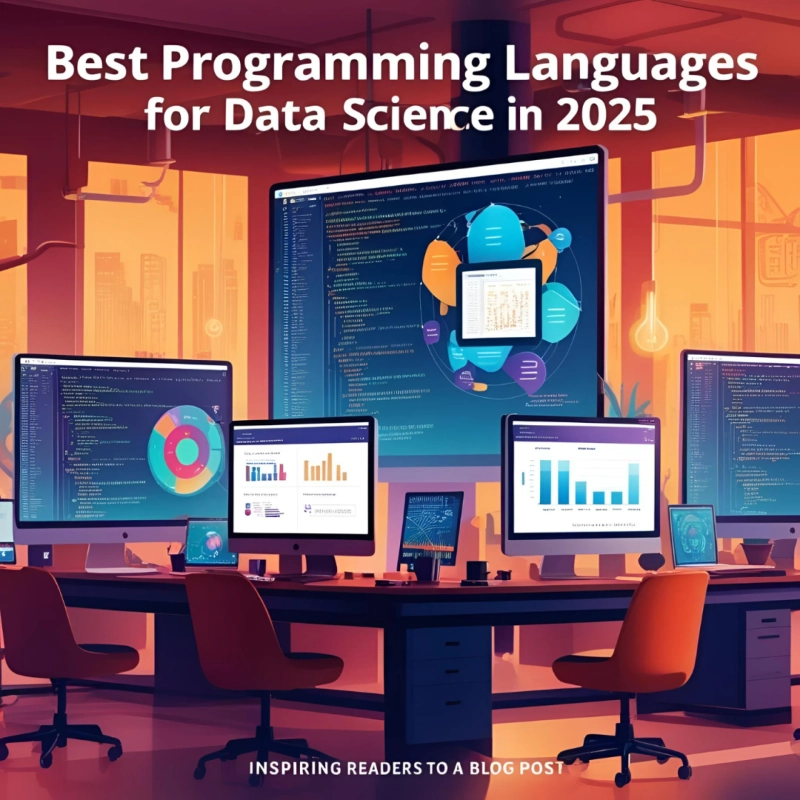If you’re venturing into data science, selecting the right programming language can make all the difference. With the rapid advancements in artificial intelligence and machine learning, certain languages have gained dominance for their efficiency, ease of use, and extensive libraries. Whether you're an aspiring data scientist or a professional looking to upskill, understanding the best programming languages for data science in 2025 is essential.
In this guide, we will explore the top languages for data science, their strengths, and why you should consider mastering them. If you're serious about growing your skills, enrolling in a Machine Learning Course in Thane can provide hands-on experience with these languages.
1. Python: The Undisputed King of Data Science
Why is Python Popular for Data Science?
Python remains the top choice for data scientists due to its simplicity, flexibility, and vast ecosystem of libraries. Whether you're dealing with machine learning, statistical analysis, or deep learning, Python has a library for every task.
Key Libraries for Data Science in Python:
- NumPy: Essential for numerical computing.
- Pandas: Helps with data manipulation and analysis.
- Scikit-learn: A go-to library for machine learning.
- TensorFlow & PyTorch: Widely used in deep learning applications.
With Python, you can easily process large datasets, build predictive models, and visualize data effectively.
2. R: The Statistician’s Powerhouse
Why Choose R for Data Science?
R is another widely used language in the data science community, especially for statistical computing and data visualization. It is popular among researchers and analysts due to its built-in support for advanced statistical models.
Key Features of R:
- ggplot2: A powerful tool for data visualization.
- dplyr: Makes data manipulation easier.
- Shiny: Enables the creation of interactive web applications.
- Caret: Simplifies machine learning model building.
While Python is often favored for machine learning, R is unbeatable when it comes to statistical modeling and hypothesis testing. If you aim to specialize in predictive analytics or bioinformatics, R is a solid choice.
3. SQL: The Language of Data Handling
Why is SQL Important for Data Science?
Data science isn’t just about building models—it starts with data extraction and management. SQL (Structured Query Language) is crucial for accessing, filtering, and analyzing large datasets stored in relational databases.
Benefits of Using SQL:
- Efficient Data Querying: Helps retrieve and manipulate large amounts of data quickly.
- Integration with Python and R: Can be seamlessly used alongside other programming languages.
- Necessary for Big Data: Many organizations rely on SQL databases like MySQL, PostgreSQL, and Microsoft SQL Server.
No matter which programming language you use for analytics, SQL remains a fundamental skill for every data scientist.
4. Julia: The Rising Star
Why is Julia Gaining Popularity?
Julia is an emerging programming language that is specifically designed for high-performance numerical and scientific computing. It combines the speed of C++ with the ease of Python, making it a promising option for data science in 2025.
Features That Make Julia Unique:
- Faster Execution Speed: Ideal for large-scale simulations.
- Dynamic Typing: Similar to Python, making it easy to learn.
- Parallel Computing: Supports high-performance machine learning applications.
- Growing Community: More developers and organizations are adopting Julia.
While Julia is not as widely used as Python or R yet, its rapid development makes it an interesting choice for the future.
5. Java and Scala: Big Data Champions
Why Do Java and Scala Matter in Data Science?
For big data applications, Java and Scala play a critical role, particularly when working with frameworks like Apache Spark and Hadoop. These languages are designed for handling large-scale distributed computing, making them essential for data engineers.
Key Advantages:
- Java: Offers strong memory management and performance efficiency.
- Scala: Works seamlessly with Apache Spark, making it an excellent choice for big data processing.
- Enterprise Adoption: Many large tech companies use Java and Scala in data pipelines.
If your data science journey includes working with massive datasets and distributed computing, learning Java or Scala will be valuable.
Conclusion
Choosing the right programming language for data science depends on your career goals and the type of data you’ll be working with. While Python dominates for general data science and AI applications, R excels in statistical analysis. SQL remains essential for data handling, Julia is on the rise, and Java/Scala are must-haves for big data processing.
If you're serious about mastering data science, consider enrolling in a Artificial Intelligence Course with Placement Guarantee in Thane to gain hands-on experience with these languages.
What are your thoughts on the best programming language for data science? Drop a comment below and let us know!


